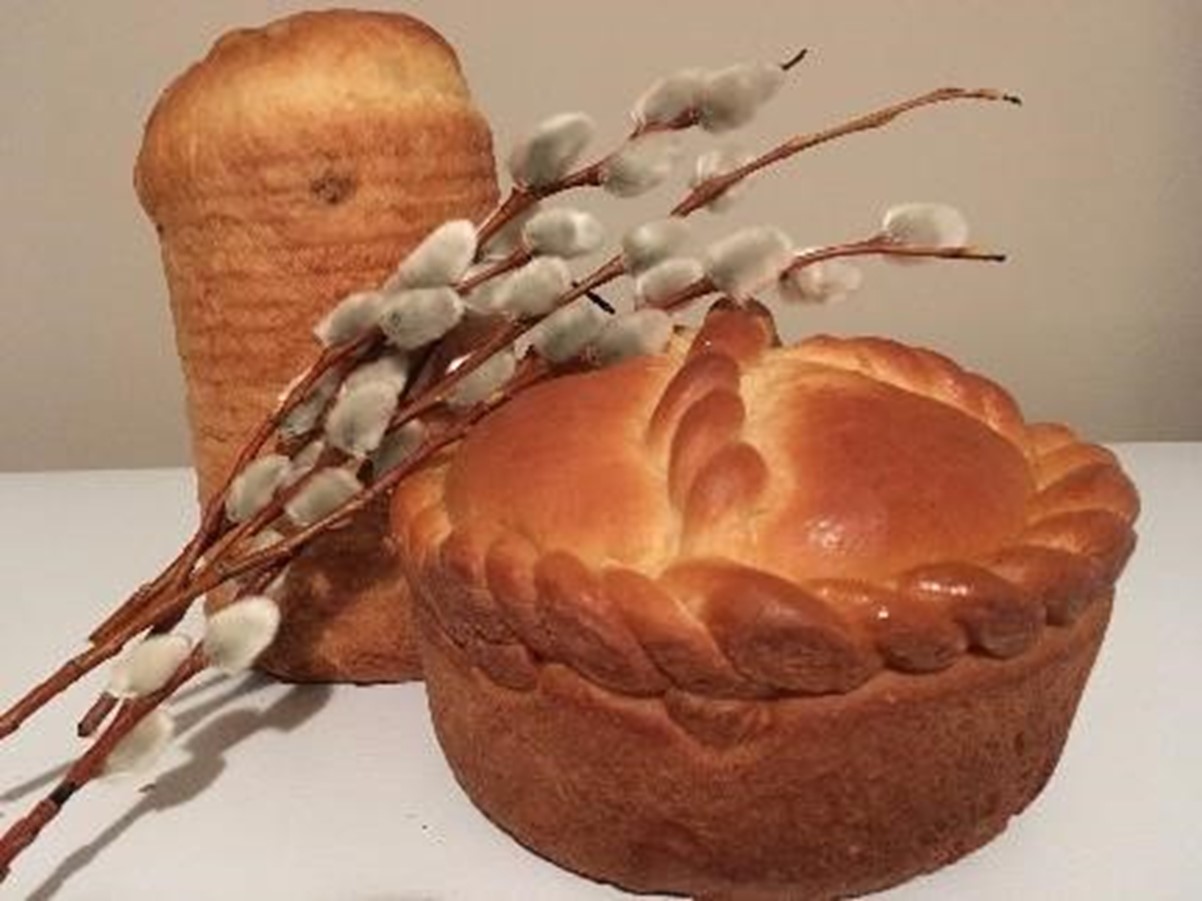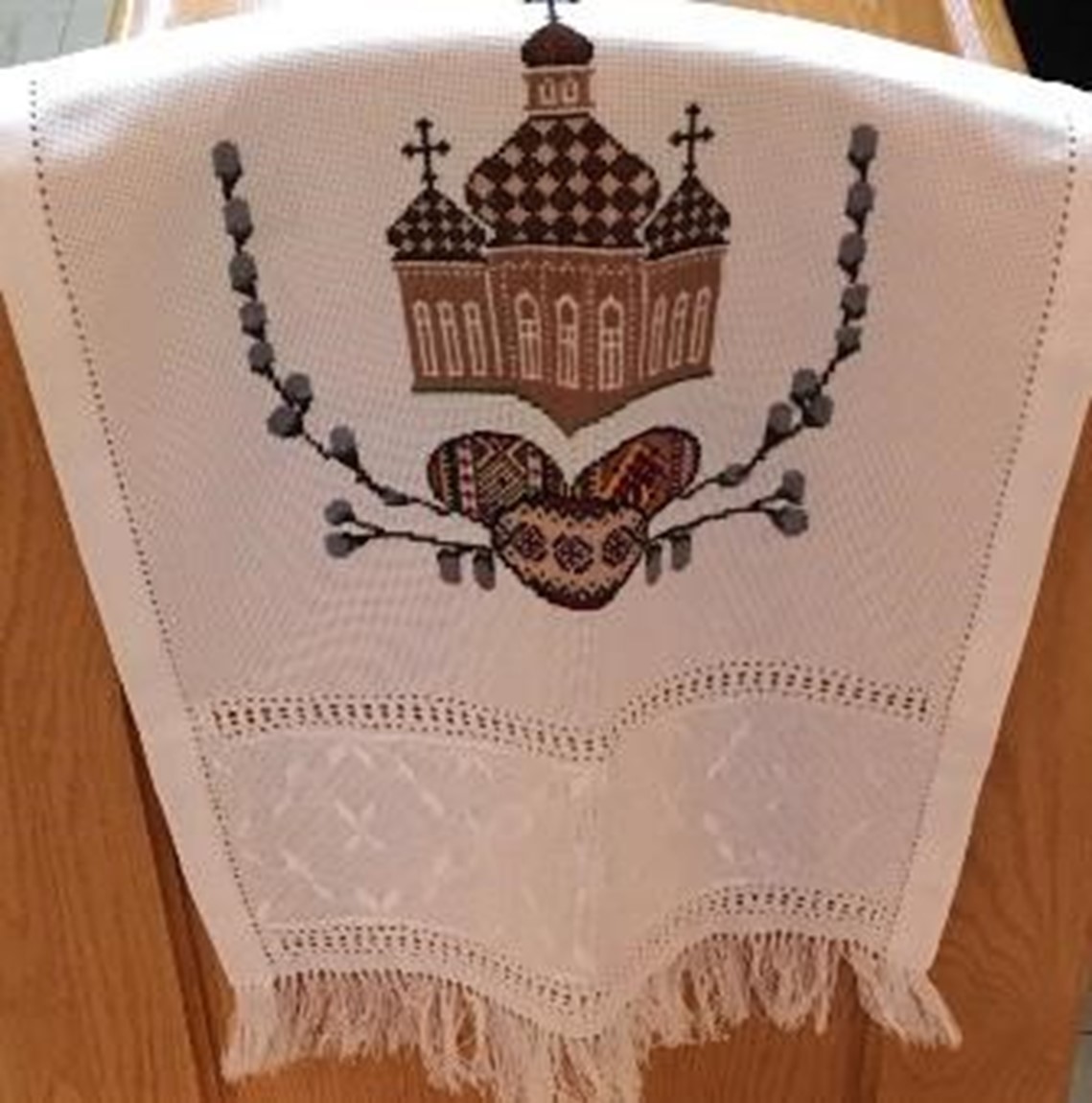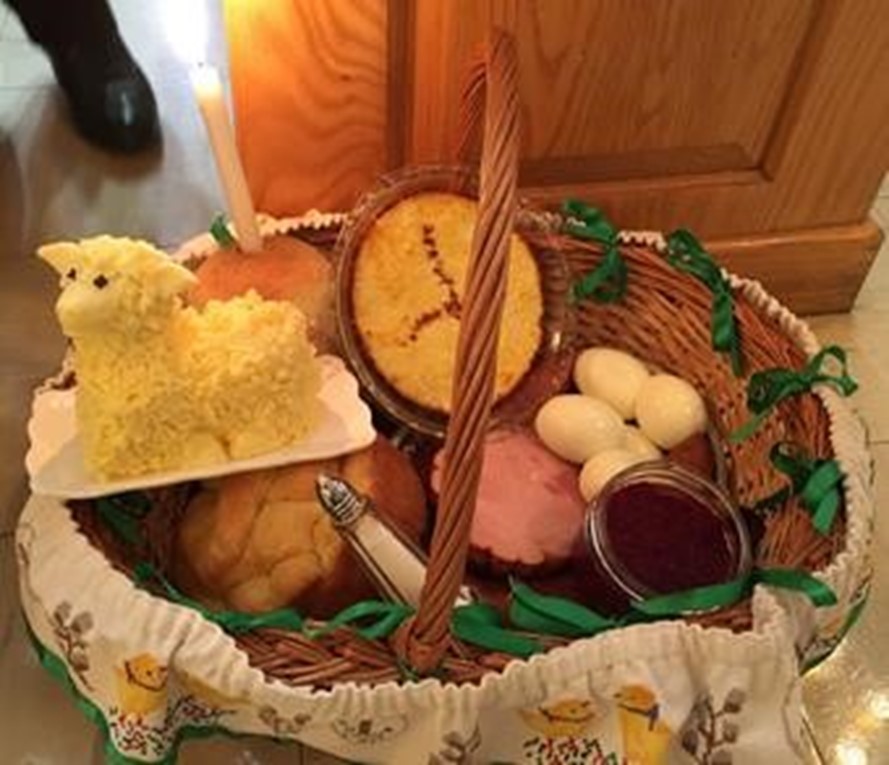The Easter Basket is more than simply delicious food. It is meant to serve as a reminder and teaching on the Feast of all Feasts; Pascha (Easter). Our celebration becomes much richer when we keep these teachings foremost in our minds. Spend time each year with your family talking about what is in your basket, reminding yourselves of the depth of God’s love and the significance of this day that we are celebrating.
Paska: is a large, round, elaborately decorated loaf of bread. It symbolizes our Lord Jesus Christ, the “living Bread” Jn. 6:51 who “came down from heaven to give life (eternal) to the world” (cf. Prayer for the Blessing of the Bread).
Babka: is a tall, sweet, delicate bread, in honour of Mary, the Mother of God (Theotokos – literally means God bearer), who was intimately connected with her Son’s birth, suffering and death.
Eggs: are a sign of hope and resurrection. Jesus comes forth from the tomb as the chick breaks the shell at birth.
- Pysanky are the eggs, beautifully decorated with symbols which were derived from nature in pre-Christian times. These symbols were eventually adapted to Christian meanings.
- Krashanky are the eggs dyed one colour. In ancient times Krashanky were dyed only red symbolizing Christ’s blood.
Grated Beets: remind us of Christ’s passion and suffering. They too remind us of His blood shed for us. They are often mixed with horseradish.
Horseradish: symbolizes the bitterness of sin for which Christ died and rose. It also reminds us of the bitterness of Jesus’ passion through which He entered into glory.
Dairy Products: remind us of the “prosperity and peace” of the Messianic times which had been foretold by the Prophets Isaiah 7:22; Joel 3:18 Metaphorically, the milk and honey in the Bible signify wealth, especially the spiritual wealth of God’s kingdom.
- Butter is symbolic of burial ointment. It is often shaped into a lamb (Christ is the Lamb of God John 1:29) or decorated with whole cloves or peppercorns in the form of a cross.
- Cottage cheese, bland in taste, reminds us of the need for self-control and moderation which we should cultivate in our daily lives.

Babka and Paska

Rushnyk
Salt: is a reminder of the commitment to follow Christ: in His words “You are the salt of the earth” Mt. 5:13
Meat products: symbolize the sacrificial animals of the Old Testament, foreshadowing the true sacrifice of our Savior, who became “a Lamb of God, taking away the sins of the world” Jn. 1:29. It is also symbolic of the great joy and abundance of Easter (Pascha).
Kobassa and Ham are generally the meats that are included.
Beeswax candle: is placed in the basket and lit during the blessing celebration. It is symbolic of Christ, “the Light of the World,” who brought us the glorious good news of the New Life.
Rushnyk: (cover) This embroidered cloth reminds us of Christ’s shroud and of our baptismal robe ‘kryzhma’. Being cleansed with the baptismal waters, we celebrate the joy of New Life as we put on the ‘kryzhma’.
The basket should be lined with an embroidered rushnyk, or a white napkin. It can also be adorned with green periwinkle, pussy willows and spring flowers which also symbolize new life.
The basket should contain only a sampling of the foods you are going to eat for Easter breakfast. It is important to remove all cellophane, foil and paper from the basket prior to having it blessed. Any items such as eggshells, leftover food that will not be eaten, flowers, cellophane, foil or paper napkins that have been blessed or may have come in contact with the blessed water must either be burned or buried and not disposed of in the garbage.
Compiled and Created by the Religious Education department of the Ukrainian Catholic Eparchy of Edmonton. Permission is granted to reproduce only for personal or classroom use. 2020

